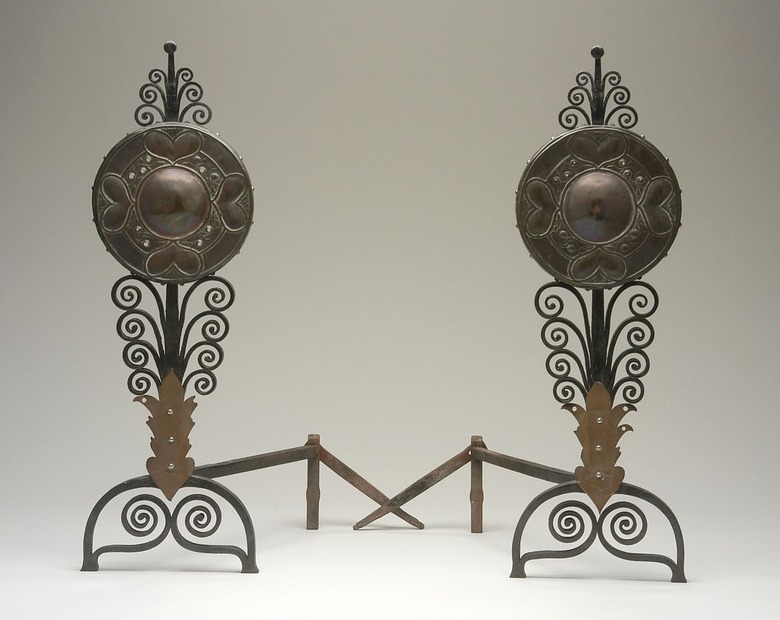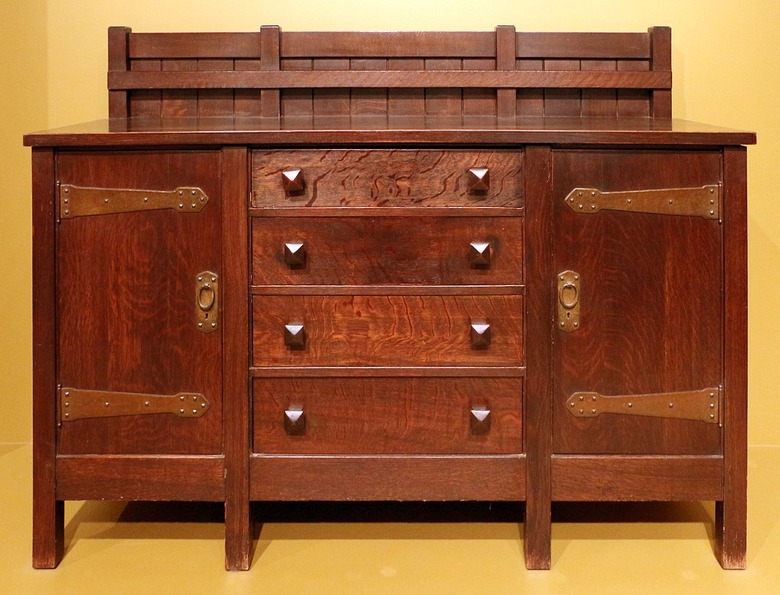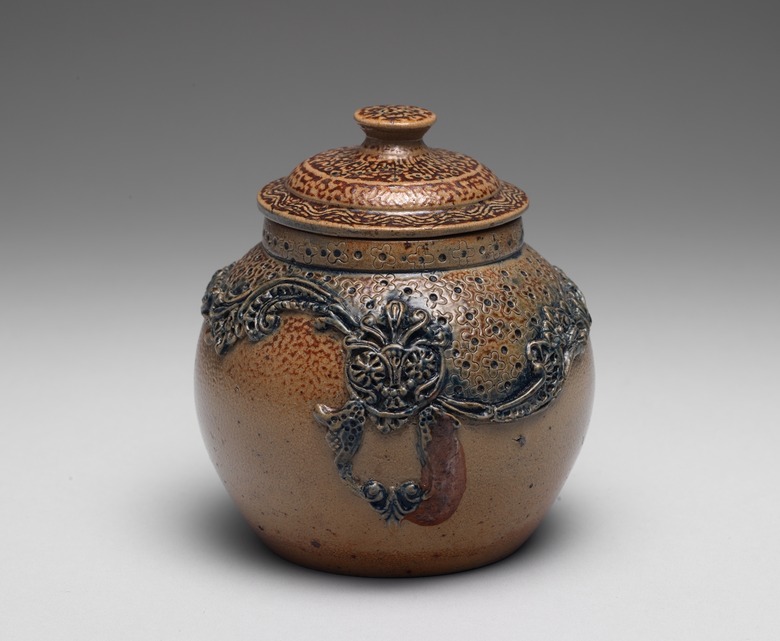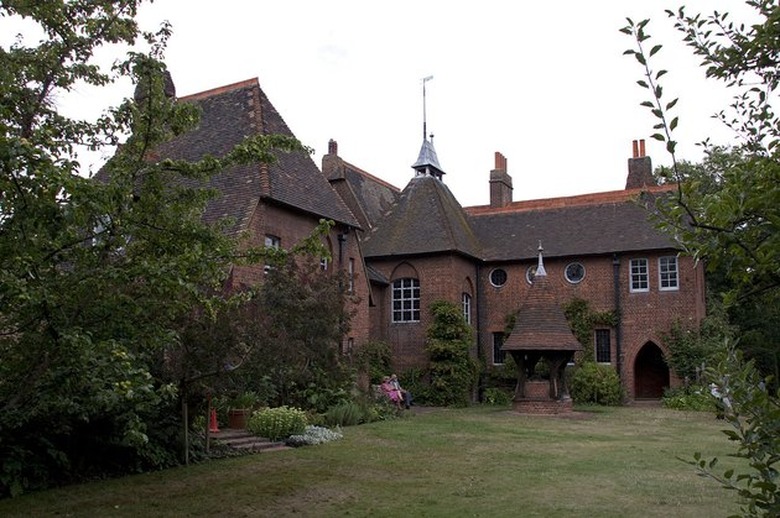Arts And Crafts Movement: Origins And Inspiration
We may receive a commission on purchases made from links.
With the popularity of Etsy and the ease of finding emerging makers on Instagram, it might seem like decor was always inextricably linked with the handmade. But a group of thinkers and designers once fought for the handmade to be taken seriously — and created an entire crusade out of it.
The arts and crafts movement started as a reaction to increasing industrialization, with machines threatening to take over the entire process of making objects. Spanning areas from furniture to pottery to architecture, the leading figures of arts and crafts wanted to keep the handicrafts alive.
As Wendy Kaplan writes in The Arts and Crafts Movement in Europe and America: Design for the Modern World, 1880-1920, "the concept of completely integrating art and life was fundamental to Arts and Crafts beliefs." Here, we take a brief look at the movement's history and impact.
A Brief History of the Arts and Crafts Movement
A Brief History of the Arts and Crafts Movement
The name "arts and crafts" was first coined in 1887, with the heyday of the movement occurring from around 1890-1910. A lot of the early thinking from designer A.W.N. Pugin and theorist John Ruskin influenced the movement, namely their apprehension towards increasing industrialization.
An advocate and leader of arts and crafts philosophy, William Morris strongly believed in the importance of the handicrafts. "Have nothing in your houses that you do not know to be useful or believe to be beautiful," he once stated. Morris, and many other influential figures, wanted to resist the way new technologies were changing the means of production. They hoped to shine the spotlight back on the handcrafted — those items that were created in purposeful, thoughtful ways.
"With William Morris, for instance, the rejection of the machine-made was a moral choice and a way to counteract the atrocious dislocations brought on by factory labor," James Glisson, Bradford and Christine Mishler Associate Curator of American Art at the Huntington Library, Art Museum, and Botanical Gardens, tells Hunker.
The arts and crafts movement influenced designers and thinkers everywhere from Scotland to Australia to the United States. It continues to tie into our modern thinking about interiors and design, too.
"The tension between the handmade versus the machine animates design today," Glisson says. "Sometimes we want rough-hewn or hand-carved surfaces, nubby fabrics, or hand-built ceramic pots with variegated glazes. We want to feel the traces of the human hand. But in other instances, there is the desire for the machined surface: the mirror-like gleam of polished stainless steel, the flawless smoothness of plastic, or the glowing paint of a new car."
Influential Arts and Crafts Movement Designers
Influential Arts and Crafts Movement Designers
While Morris's name might be the one you see most in histories of the arts and crafts movement, plenty of other figures made waves in the areas of interior design, sculpture, furniture, and more. For example, Morris's daughter, May Morris, exhibited her work and founded the Women's Guild of Arts.
Susan Stuart Frackelton's china and stoneware pieces highlighted the importance of ceramics within the movement. She also founded the Milwaukee Artists' Association in 1887. Designers like Charles Robert Ashbee, William Arthur Smith Benson, and M.H. Baillie Scott made lasting contributions as well.
When it comes to architecture, brothers Charles and Henry Greene (also designers) set the tone for the Craftsman house style — Craftsman being the American name for the arts and crafts movement's architectural style in the U.S.. The Greenes found inspiration in Japanese architecture and Southern California aesthetics. Gustav Stickley helped further the style by founding the magazine The Craftsman, a resource that shared floor plans, history, and sometimes even insights on political issues with its readers.
Arts and Crafts Movement Homes
Arts and Crafts Movement Homes
Because the arts and crafts movement also extended to architecture, a lot of the same major themes applied to houses. Arts and crafts homes often featured handmade furniture and decor, fireplaces, and simple floor plans. Architects also kept location in mind, striving to make a structure fit into its surroundings and not the other way around. The emphasis remained on the family and on spending quality time at home, so everything was designed to make that as easy as possible.
In the U.S., the movement became known as Craftsman. The style also became synonymous with the bungalow, which comes from the Hindi word baṅglā and the Urdu word banglā — "literally (house) in the Bengal style," according to Merriam-Webster. Structures like the Gamble House in Pasadena, California by the Greene brothers became iconic for their design. The Red House, designed by William Morris and Philip Webb, is one of the quintessential examples of an arts and crafts home in England.
Today, we love seeing how people mix modern and vintage in their arts and crafts homes and Craftsman spaces. The movement continues to inspire designers today, and we don't see that changing any time soon.



